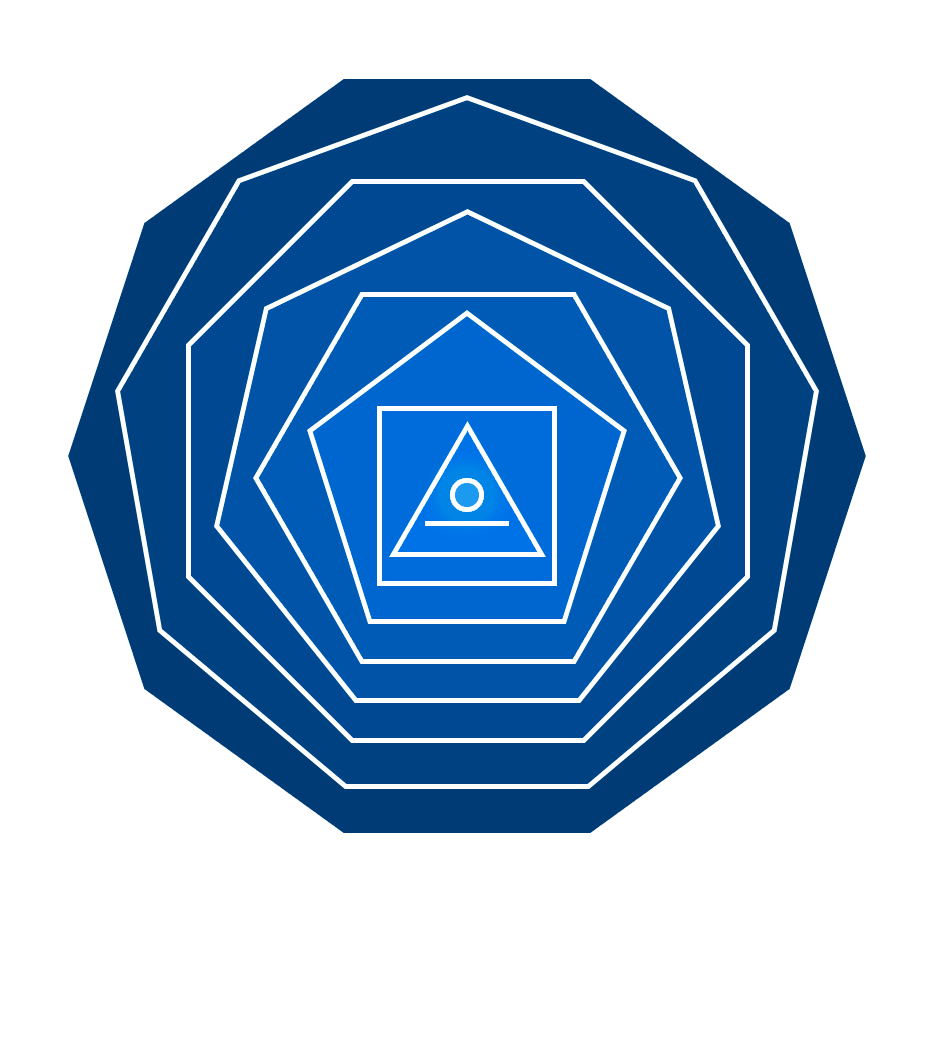Chapter 1: Seeing Wholes
“Wholeness is what is real, and fragmentation is the response of this whole to man’s action, guided by illusory perception, which is shaped by fragmentary thought.” – David Bohm, Wholeness and the Implicate Order
As we stand up to face the fear of becoming insignificant in an AI-dominated future, we turn our focus to what we can do uniquely as human beings. In order to continue to create value, we have to learn to see and think differently than the AIs do.
Take a moment to look around you. What do you see?
Notice the process by which you perceive and make sense of your world. As an “educated” person, what role does your education play in this process? How do you tend to assign labels and categories to the objects you see? To the people? To the places you live and work? How does this categorization cause you to skim over, with a sense that you know what you’re looking at, engaging with the world on a superficial level?
This fragmentation is exactly how AIs process the world. They break things apart into tiny fragments of data and reassemble them into something that appears coherent. It’s an efficient way to produce knowledge, but not understanding. Understanding begins when we see beyond the fragments—when we learn to see wholes.
The challenge is, we’ve been programmed ourselves to think in this fragmenting way. In her book Indirect Work: A Regenerative Change Theory for Businesses, Communities, Institutions and Humans, Carol Sanford writes:
“[The process of fragmentation] is so deeply conditioned in us and so deeply embedded in our language that we can hardly see it happening, let alone recognize its consequences. It is a form of mental murder, intellectually dissecting and dismembering living beings until there’s no being left.”
While breaking things apart and analyzing parts may be effective for complicated work, such as solving technical problems, it is catastrophic when working with complex living systems.
How This Relates to Our Potential Roles
Recall the premise presented in the introduction, worth repeating here: as human beings, we have a unique capacity, though largely underdeveloped, for realizing and actualizing the evolutionary potential of unique, complex living systems.
The concept of unique potential is key for our exploration of future roles because it requires a sense-making process that transcends the analytical, data-driven process that AI excels in. Uniqueness, by definition, cannot be captured by existing labels and categories. Therefore, in order to understand uniqueness, we must have the capacity to see beyond our conceptual map of reality—to see our world more clearly for what it is, not merely what we’ve been programmed to think about it.
This is not easy and will require a lot of practice. We’ve been deeply conditioned to make sense of the world around us through the lens of our education—collecting data in the form of concepts and ideas about the world. When we were young children, before we were “educated” in this way, we saw the world very differently.
A fundamental aspect of the developmental work needed now is one of remembering. It’s more about peeling back the layers of programming than it is about piling on more information. In fact, the word development has its roots in the Old French desveloper, which means to de-veil, unwrap, or unfold. True development, then, is less about adding more layers of knowledge and more about unveiling what is already present but unseen.
To realize and actualize the potential of living beings or living systems, to develop ourselves and these systems together, requires the ability to sense what is under the veil, trying to emerge.
Situating the Process in Place
“We find ourselves not in a world of pregiven things but in a world that is continually brought forth through the process of our living.” – Francisco Varela, Evan Thompson, and Eleanor Rosch – The Embodied Mind
I was recently working with a Global Learning & Development (L&D) team within a large multinational lighting company. The company is a pioneer in the industry, known for its leadership in innovation and sustainability. The team was working to create a new L&D strategy that would embrace the latest trends in the field: away from a primary focus on formal training, toward an approach that integrated more experiential and social learning. The roles of the team within the organization, as well as the individuals on the team, were being called to shift in some fundamental ways. Yet there was a lot of uncertainty around exactly what, how, and why.
It quickly became clear that there was a lot of fragmentary thinking going on. Their vision was piecemeal—borrowed ideas stitched together to impress stakeholders with a show of sophistication. The strategy was also being created in a vacuum. There was a lot of talk about trends and ideas within the world of L&D, but little focus on the system there were serving as a whole. As a result, there was a lack of strategic alignment. A lot of time and energy was being burned up in a state of internal push-and-pull.
Nested Wholes: The Monad
“The key is that [the system we are studying] must be sufficiently complete in terms of human experience so that we have contact with it… before we begin to understand a ‘something,’ we must first recognize what this ‘something’ is. We must bring into focus the particular structure we are trying to understand.” – J.G. Bennett
This bringing into focus requires that we perceive the system directly, beyond our approximate knowledge of it. The basic framework for this in Bennett’s Systematics is the monad (1-term system): helping us to see a specific system as a whole, bringing it into focus.
Understanding any particular living system, such as a team or organization, is not possible by analyzing it in isolation. We have to see it within its larger context. The framework we’ll use for exploring the relationship between wholes is called Nested Wholes (which is a slightly modified version of a framework I learned while working with my colleagues at the Regenesis Institute). It illustrates a fundamental pattern in nature of nestedness: living systems are always nested within larger living systems. It provides a lens that helps us situate ourselves within our own unique context.

To stay grounded in my example of the L&D team, we used this framework to frame our work as a team nested within the organization, the organization nested within the lighting industry, and the lighting industry nested within the field of the built environment. This gave us the following frame:

I posed a question to the team: how are the roles of these systems co-evolving?
It became evident that to truly understand how roles within the team were being called to evolve, we required an understanding of how the team’s role within the organization was being called to evolve, and so on: the organization’s role within the industry, the industry within the field of the built environment, and so on.
Of course, at this stage in our process, we discovered more questions than answers. It was as much a realization of our lack of real understanding as it was understanding itself. It was a disruption of the belief that we had a good grasp of where we were, which laid the foundation for doing the work required to develop real understanding. We call this process developmental dialogue—using dialogue not to exchange information, but to co-evolve understanding of living systems as wholes.
For some on the team, this experience was unsettling. They were enjoying being “in the know.” For others, it was exciting and liberating. Their world was becoming more interesting. New potential was coming to light. Perhaps it’s more accurate to say that for all of us, it was some of both: unsettling and exciting at the same time.
One realization was that we’d been thinking about roles in a way that was very much “in the box.” In other words, we were attached to certain descriptions of roles that limited our ability to recognize new possibilities. As we worked to loosen the grip of these attachments, new potential began to reveal itself. We began to develop our capacity for thinking differently about roles—beyond merely functional descriptions, in terms of the unique value that we were creating.
This of course is extremely relevant for all of us at this moment. The human roles of the future are largely unknown and undefined. We can’t navigate this process with existing maps of what people are supposed to do. On a level that humanity has never experienced before, there is no career roadmap to follow. Discovering new value-adding roles doesn’t just mean a new job title—it means a new process of creating value (which may happen under the same title). First, it is something that happens within a unique context. It starts here.
Getting to Work
I can only go so far in describing this discipline of seeing wholes with words. It is not a thing, but rather the experience of a process. A story can help, but there is no substitute for doing the work yourself.
It’s important to note that there is no one “right way” to use this framework (or any of the frameworks we’ll practice with here). With Nested Wholes, there are always many other levels beyond the four we are bringing into focus. Yet I’ve found through my own practice that this is a manageable number to begin the process. In time, we’ll learn to use this framework to shift our focus to other levels, or other sets of living systems.
Step 1: Identify the Whole
Begin by identifying the initial set of nested systems you will focus on. I encourage you to take a little time to sense what feels most alive and relevant for you right now. You might put yourself in the center as the system in focus, then think about the specific proximate whole that is currently most alive for you in terms of evolving your role. For example, this could be the team you are currently working on, a client team you are working with, or your immediate family.
Next, identify the greater whole. This could be the organization your team or client team is nested within, or perhaps the neighborhood or community your family is nested within.
Finally, consider the field of endeavor: this could be an industry, a market, or a bioregion. Aim to create a frame for this work that sparks curiosity and generates meaning for you—systems that you sense have potential which you have not fully realized, systems that you care about. Consider making a rough sketch of the nested systems to make your frame concrete.
Step 2: Image the System at Work
With this specific set of nested systems, try to image the system as a whole. You might experiment with using the Triad of Experience framework presented in the introduction to guide this practice of imaging:
What patterns of behavior do you observe? What is it doing? (Function)
How is energy flowing through the system? What is the quality of this energy? How is it relating to itself and the world around it? (Being)
What is the system trying to become? What is motivating it? What are the roles it is being called to serve in? (Will)
How are roles of these systems co-evolving as a whole?
Spend some time with these questions as you attempt to create an image of these nested systems in your mind. These are challenging questions that are likely to generate more questions than answers, by design. Observe the effect this process has on you. Notice where there is tension, confusion, or resistance. Sit with your experience—aim to accept it without any self-judgement. If helpful, take some notes on the patterns you are observing for future reflection.
Step 3: Reflect on the Experience
What new potential is this experience helping you to realize? To what degree is it shining a light on the work that is yours to do (as Carol Sanford would say)? At this stage, the image is likely fuzzy. It probably has some dark spots. Illuminating these areas and increasing the resolution of the image is at the heart of the work we’ll be doing here.
For me, this exercise produces a somewhat discomforting realization that I have a lot of work to do to truly understand the world I’m living and working within. Even with the people I “know” best, such as my wife and kids, I realize there is much I’ve been overlooking. In many ways I haven’t been seeing them for who they are. I’ve been interacting with them with a profound lack of understanding. What is it that makes them uniquely themselves? How are they being called to contribute this uniqueness in the systems they are living, working, and learning within? To what degree are they in touch with their own uniqueness and what is calling to them?
It is here, leaning into these questions, that we ground ourselves as we engage in a developmental process moving forward—work that no AI can or will ever do for us. This is the beginning of learning to see, and to serve on higher orders, the living systems we belong to.
Participate in the Process (No Cost)
Fill out the short form to receive updates when new chapters of the book are published, along with prompts to share your reflections and invitations to free workshops and coaching sessions. No spam, unsubscribe anytime.

